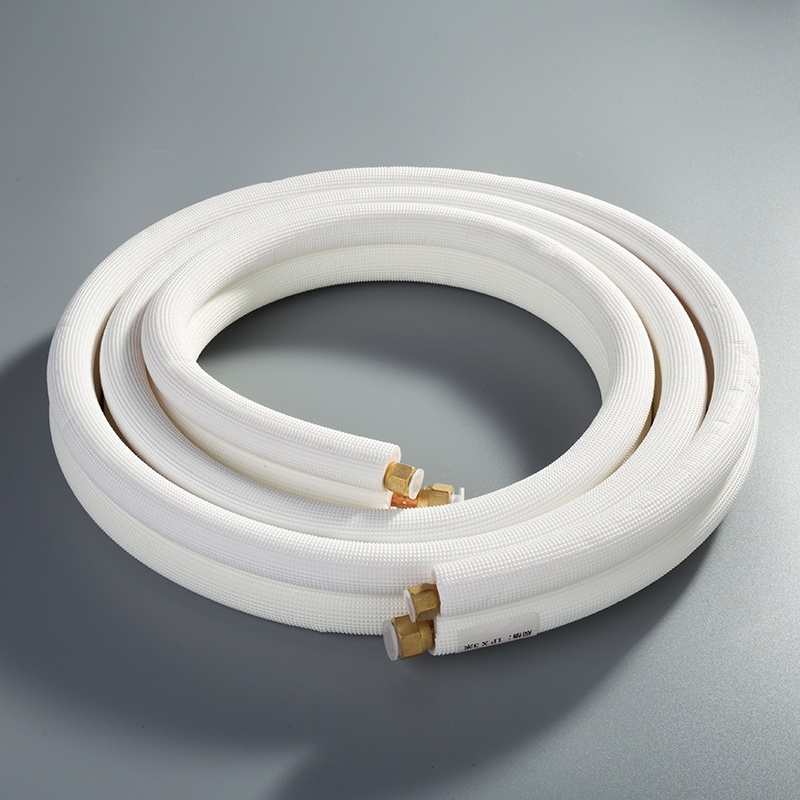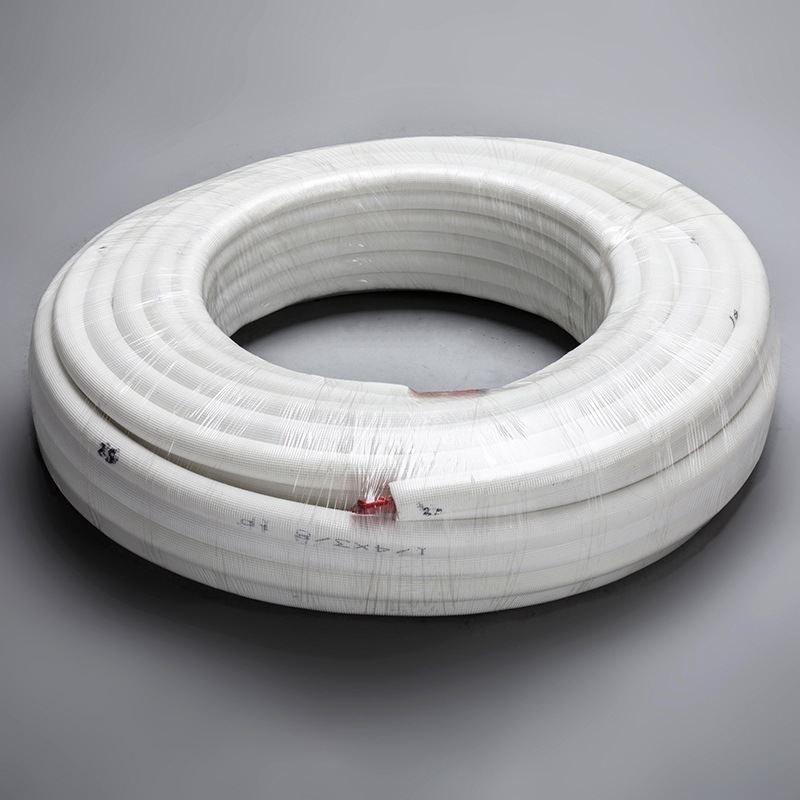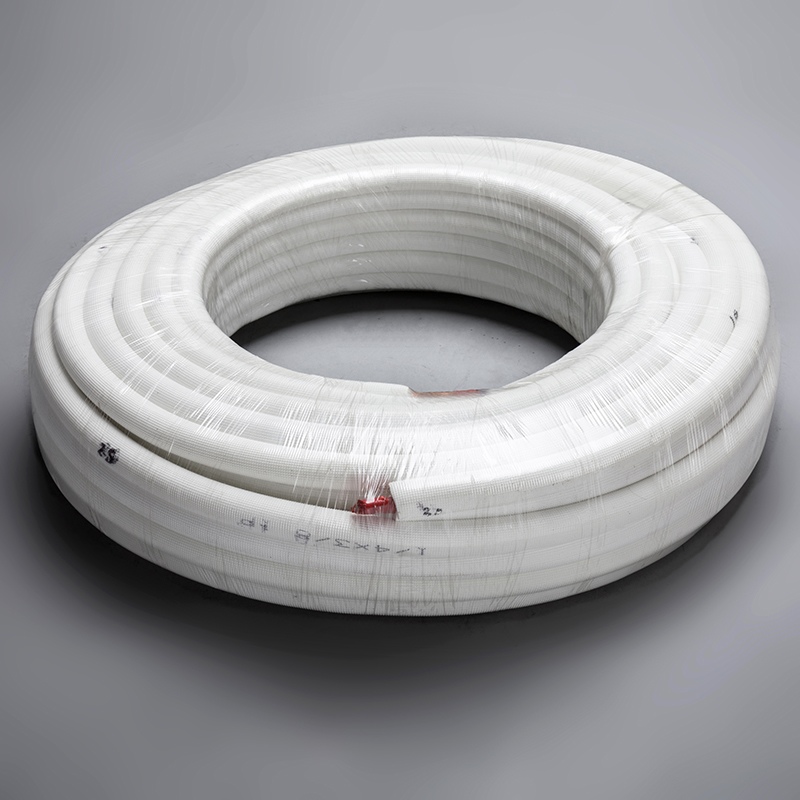Cost Comparison of Aluminum vs Copper Piping for Air Conditioning

Selecting the appropriate piping material is crucial for optimal performance of air conditioning systems. Copper and aluminum are commonly used materials in this regard. This blog aims to meticulously write a comparison blog post on the cost of aluminum vs copper piping for air conditioning. The detailed analysis will shed light on the economic aspects of opting for either copper or aluminum, providing valuable insights for informed decision-making.
Material Properties
Thermal Conductivity
When it comes to thermal conductivity, Copper outshines Aluminum. According to a study by Baoyuan, Copper boasts a thermal conductivity value of 38, significantly higher than Aluminum's value of 175. This means that Copper tubes can transfer heat more effectively, leading to quicker cooling or heating processes within air conditioning units.
Copper
Superior thermal conductivity with a value of 38.
Efficient heat transfer for faster cooling and heating processes.
Aluminum
Lower thermal conductivity with a value of 175.
Slower heat transfer compared to Copper.
Corrosion Resistance
In terms of corrosion resistance, Copper prevails over Aluminum. The anti-corrosive properties of Copper are highly commendable. It can better handle oxidation and corrosion, ultimately providing air conditioners with a longer lifespan. This is an essential factor to consider when selecting materials for plumbing and HVAC systems.
Copper
Excellent anti-corrosive properties.
Better oxidation and corrosion resistance for longevity.
Aluminum
Less resistant to corrosion compared to Copper.
Requires additional protection against oxidation.
Weight and Flexibility
When considering weight and flexibility, Aluminum takes the lead due to its lighter nature. Aluminum piping is easier to handle during installation processes, making it a preferred choice in certain scenarios where ease of handling is crucial. Additionally, the malleability of Aluminum allows it to be formed into various shapes, enhancing its flexibility in different installation settings.
Copper
Heavier compared to Aluminum piping.
Less flexible but durable in construction applications.
Aluminum
Lighter weight than Copper piping.
More malleable for versatile shaping options during installation processes.
Installation and Maintenance

Ease of Installation
Copper
Requires skilled professionals for precise installation procedures.
The rigidity of copper pipes demands careful handling during the installation process to prevent damage.
Copper piping necessitates specialized tools and techniques for accurate fitting and alignment.
Aluminum
Installation of aluminum piping is relatively straightforward due to its lightweight nature.
Aluminum pipes are easier to maneuver and position, reducing the complexity of the installation process.
The flexibility of aluminum allows for simpler adjustments and modifications during installation tasks.
Maintenance Requirements
Copper
Regular maintenance is essential to prevent corrosion in copper piping systems.
Periodic inspections are necessary to identify any signs of wear or leaks in copper pipes.
Copper pipes may require protective coatings or treatments to enhance their longevity and durability.
Aluminum
Maintenance for aluminum piping involves periodic checks for oxidation or corrosion issues.
Due to its susceptibility to oxidation, protective measures like coatings or sealants are recommended for aluminum pipes.
Ensuring proper insulation and protection from environmental factors can prolong the lifespan of aluminum piping.
Cost Considerations
Initial Costs
Copper
Copper Aluminum Pipes offer long-term financial sustainability, reduced maintenance costs, enhanced system efficiency, durability, and corrosion resistance.
Copper Piping is more expensive than aluminum due to its less ductile nature, requiring more material.
Aluminium vs. Copper Price: Aluminium is more affordable than copper, with aluminum costing around $1.60 per pound compared to copper's $3.00 per pound.
Aluminum
Aluminum piping has a lower initial cost compared to copper piping.
The affordability of aluminum makes it an attractive option for businesses and individuals looking to minimize upfront expenses.
Manufacturers may opt for aluminum pipes over copper due to the cost-effectiveness of the material.
Long-term Costs
Copper
Copper Aluminum Pipes excel in HVAC applications by offering durability, efficiency, and a longer lifespan for air conditioners.
Regular maintenance of copper piping can lead to electricity savings over time.
Aluminum
Aluminium vs. Copper Price: Aluminium's affordability translates into long-term cost savings for users.
Product Description: Copper aluminum pipes ensure prolonged durability and reduce energy consumption in the long run.
The longevity and corrosion resistance of aluminum piping contribute to reduced long-term maintenance costs.
Despite potential higher energy consumption compared to copper, the overall cost-effectiveness of aluminum makes it a viable choice for many consumers.
Performance and Efficiency

Energy Efficiency
Copper
Copper pipes exhibit exceptional heat transfer efficiency due to their superior thermal conductivity value of 38, surpassing aluminum's value of 175.
The high thermal conductivity of copper ensures rapid cooling and heating processes within air conditioning systems, contributing to energy savings over time.
Aluminum
Aluminum piping, with a lower thermal conductivity compared to copper, may lead to slightly higher energy costs in the long run.
Despite its lower heat transfer rate, aluminum pipes are still a viable option for those seeking cost-effective solutions in HVAC applications.
System Compatibility
Copper
Copper pipes are renowned for their compatibility with various HVAC systems, offering optimal performance and longevity.
The durability and efficiency of copper make it a preferred choice for ensuring seamless operation within air conditioning units.
Aluminum
Aluminum piping is compatible with a wide range of air conditioning setups, providing flexibility in system design and installation.
While not as thermally conductive as copper, aluminum remains a suitable material for achieving efficient cooling and heating functions in HVAC systems.
To summarize, copper piping excels in thermal conductivity and corrosion resistance, while aluminum piping offers cost-effective solutions with its lightweight nature.
Considering the initial and long-term costs, aluminum emerges as a more affordable option compared to copper piping.
Depending on specific needs, copper is ideal for durability and efficiency, whereas aluminum provides flexibility in installation.
It's crucial to weigh all factors before deciding between aluminum and copper piping for air conditioning systems.
For further insights, refer to Baoyuan's product link at CopperPipe.net for detailed information.
See Also
Exploring the Effectiveness: Copper vs. Aluminum Tubing in Aircon
Benefits of Selecting Copper Piping for Air Conditioning
The Importance of Pure Copper Piping for Effective Air Conditioning
The Impact of Pure Copper Piping on Air Conditioning Innovation
Key Factors in How Copper Piping Transforms Air Conditioning


